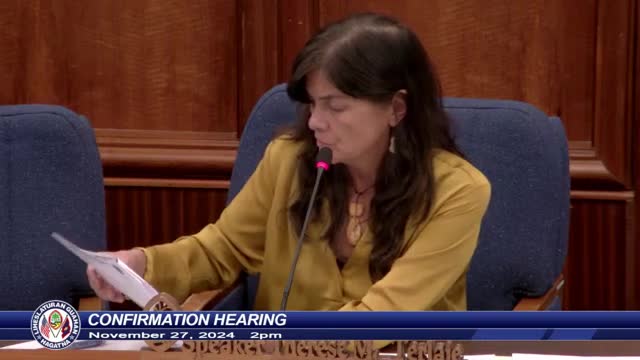Fire department plans revolutionary community-based paramedic program
November 01, 2024 | Fire, Agriculture, Power and Energy Utilities, Public Transit, Unemployment Insurance and Universal Health Care Insurance , Legislative, Guam
This article was created by AI summarizing key points discussed. AI makes mistakes, so for full details and context, please refer to the video of the full meeting. Please report any errors so we can fix them. Report an error »

In a recent government meeting, discussions centered on the enhancement of the mobile integrated health care system, particularly the introduction of a community-based paramedic program aimed at reducing emergency room visits. The initiative seeks to provide follow-up care for patients discharged from hospitals, targeting those at high risk of readmission. This program would employ civilian paramedics who would work closely with urgent care facilities to ensure patients receive necessary follow-up care within 48 hours of discharge.
The acting chief emphasized the importance of bolstering the paramedic program, noting that the current cohort of paramedics is being trained to meet the community's needs. The proposed community-based paramedics would not take on additional duties from existing firefighter-paramedics, allowing for a more focused approach to patient care.
Concerns were raised regarding the adequacy of the current ambulance fleet, with only four operational units available. The acting chief acknowledged the challenges posed by limited resources and emphasized the need for a standardized procurement process for ambulances and essential equipment. The discussion highlighted the necessity of securing funding, potentially through reassessing the ambulance transport fee schedule to align with Medicare rates, which could provide additional financial support for equipment and training.
The meeting also touched on the potential separation of paramedic and firefighter roles, with the acting chief arguing against this move, citing the cost-effectiveness of having multi-skilled personnel capable of responding to various emergencies. The chief expressed optimism about future improvements to the 911 system, including the establishment of a centralized communications center to enhance operational efficiency.
Overall, the meeting underscored the critical need for improved emergency medical services in the community, with a focus on proactive care and better resource management to ensure timely responses to health emergencies.
The acting chief emphasized the importance of bolstering the paramedic program, noting that the current cohort of paramedics is being trained to meet the community's needs. The proposed community-based paramedics would not take on additional duties from existing firefighter-paramedics, allowing for a more focused approach to patient care.
Concerns were raised regarding the adequacy of the current ambulance fleet, with only four operational units available. The acting chief acknowledged the challenges posed by limited resources and emphasized the need for a standardized procurement process for ambulances and essential equipment. The discussion highlighted the necessity of securing funding, potentially through reassessing the ambulance transport fee schedule to align with Medicare rates, which could provide additional financial support for equipment and training.
The meeting also touched on the potential separation of paramedic and firefighter roles, with the acting chief arguing against this move, citing the cost-effectiveness of having multi-skilled personnel capable of responding to various emergencies. The chief expressed optimism about future improvements to the 911 system, including the establishment of a centralized communications center to enhance operational efficiency.
Overall, the meeting underscored the critical need for improved emergency medical services in the community, with a focus on proactive care and better resource management to ensure timely responses to health emergencies.
View full meeting
This article is based on a recent meeting—watch the full video and explore the complete transcript for deeper insights into the discussion.
View full meeting